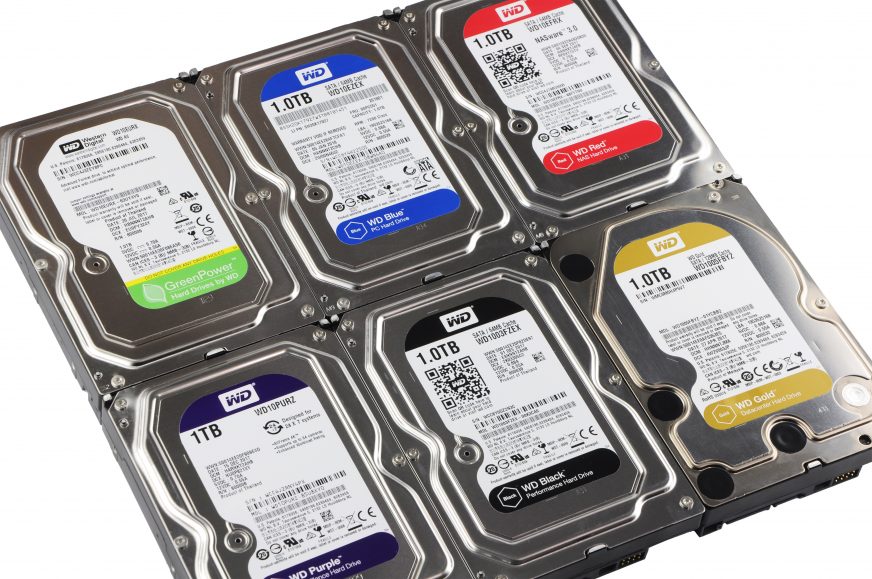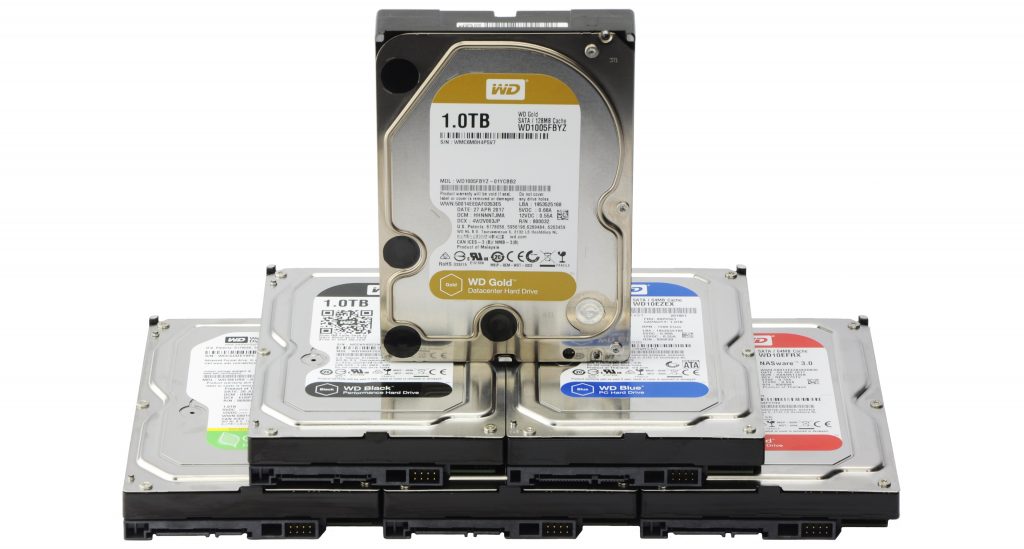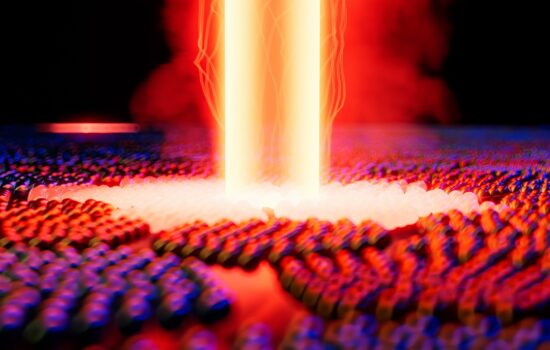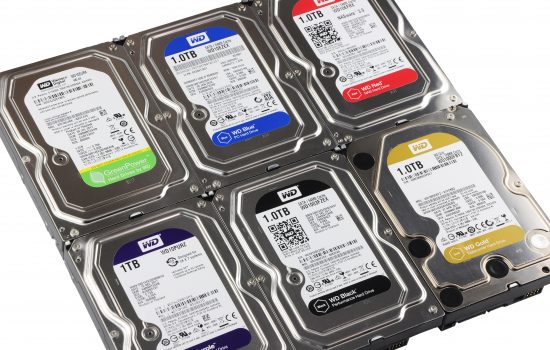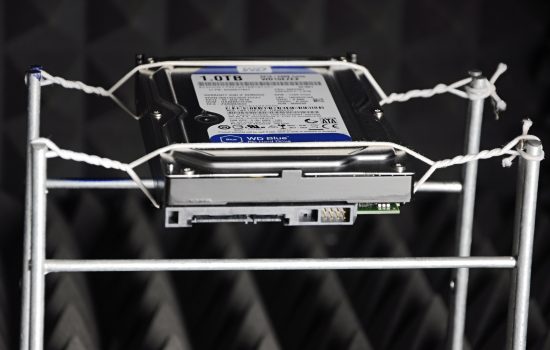Conclusion
What disk is best for an office work, photos, videos, operating systems, games, and for demanding servers? And is the Red really well designed for network storage? You can find out in this practical comparison of the performance, consumption, and noise levels of each model from WD. The differences are significant and the results surprising. Green, blue, red, purple, black, or gold?
Conclusion
It is a pity that WD has stopped the production of green series. The latest model (WD10EURX) is definitely the quietest HDD in our test, which makes it the most appropriate choice for data archiving in ULN. A small comfort is that the Purple (WD10PURZ) is very similar to the Green. Even though it is a bit noisy, it has better performance and price.
The best performance for the price is the Blue (WD10EZEX). On the other hand, we aren’t very pleased with the Black (WD1003FZEX). You pay 60% more for 1 GB, and you get only slightly better performance during sequential writing and reading of smallest files. This is also the only situation when the Black has a higher power consumption (with 5V that supply the logical part of the disk). However, the access time is nothing special, although the Black is a bit more calm (less vibrations). When transferring anything bigger than the smallest files, it falls behind its blue brother (but with slightly better consumption). The reason for this behaviour can be explained by the lower current load on the 12V conductor that supplies mechanical part. This means that it has actually a bit lower RPM, or it has simply slower arms.
Now to deal with the red and the gold models. They are both from different worlds, but they share recommendations for continual use. The Red is the disk with the best consumption. The consumption with 12V is the same as with other 5400rpm models, but it leads thanks to a lower current load of the logical section. It can get to the standby mode really fast (at 0.7 W), so it makes sense to use it in NAS. For comparison, the power input of the Purple and the Green is practically the same at 5V, the consumption does not decrease in idle. This also applies to the Gold (WD1005FBYZ) which is supposed to be the model with the highest performance and immediate response. Its consumption in idle (4.86 W) is higher than Purple‘s consumption under load (4.25/4.31 W). On the other hand, over 200 MB per sec. with HDD is a great result, and even more admirable is the write time of 512B blocks – less than 3 ms (Blue and Black are 4 times slower). It is also worth mentioning that it has the most stable performance. However, the very high performance requires the heads to move extremely fast, which means more vibrations. It is therefore 7 – 9 dBA louder (depends on the mounting system).
TL;DR: With the exception of the controversial Black model which is more expensive and basically also slower than Blue, we can recommend each of the models. Purple, in addition to being suitable for static data, can be a good alternative for Green. Blue is a fine compromise for lower budget configurations that need more space than a cheap SSD can provide. Red is slow but very economical, which is an important attribute when you need a disk for non-stop operation. Gold is twice as hungry, but its performance is worth it.
If you would like to give us a tip for a review, feel free to do so in the comment section. We will be grateful for any feedback!
- Contents
- What and how we were testing
- Write
- Read
- Random access
- Input power + heating
- Consumption
- Noise
- Conclusion





